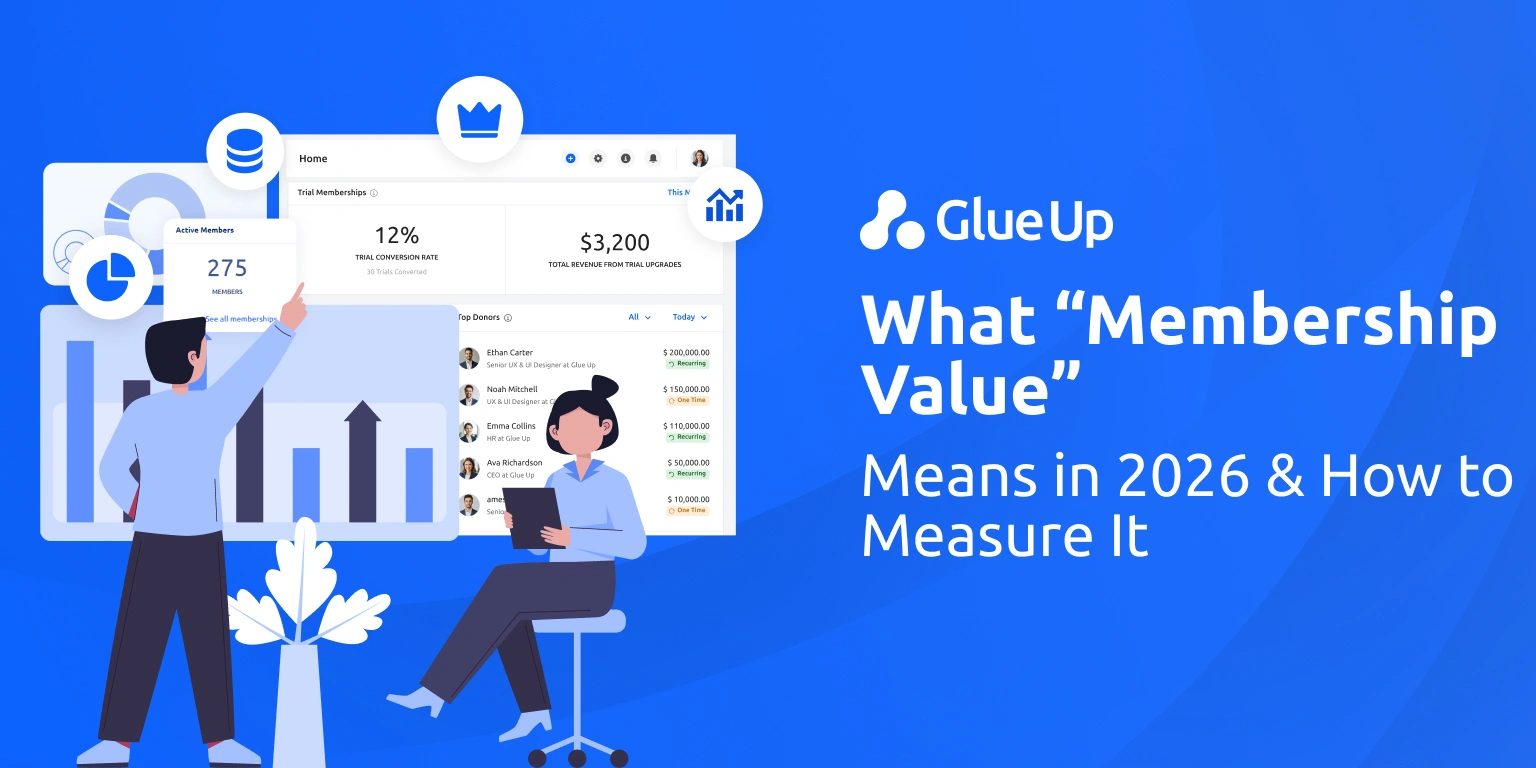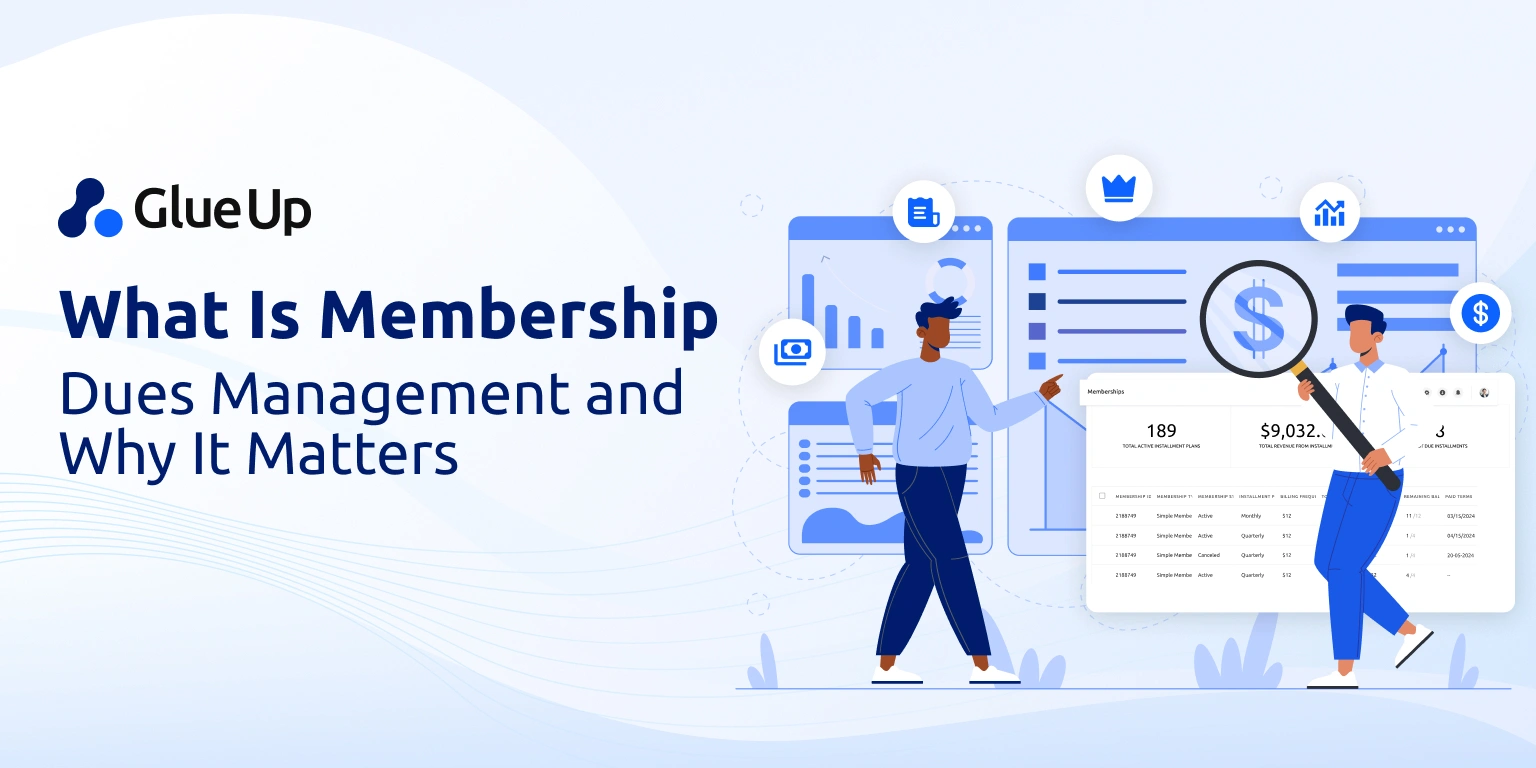
Member churn and attrition rate are two terms that are often used interchangeably, but there's a notable distinction between them. Member churn rate focuses on customer turnover. It's a metric used in customer-facing industries, especially those with subscriptions or memberships. It measures the percentage of members who cancel their subscriptions or memberships within a specific period.
The attrition rate, on the other hand, refers to employee turnover. It's a human resources metric that tracks the number of employees who leave the company during a given timeframe, regardless of the reason. Attrition can be voluntary (resignation) or involuntary (termination).
In this blog, we'll explore the concepts of member churn and attrition rate, examining their definitions and revealing the significant differences between them. Stay tuned to discover the secrets behind member loyalty and employee retention.
Key Takeaways
- Member churn rate measures the percentage of members who cancel their subscriptions within a specific period, commonly used in customer-facing industries with memberships or subscriptions.
- High churn rates result in revenue loss and increased acquisition costs. Constantly addressing churn diverts significant resources and can negatively impact staff morale and operational efficiency.
- Investing in member learning and development, improving benefits and perks, and organizing effective team-building activities can significantly reduce churn.
- Providing exceptional customer service is critical for member retention. Effective resolution of member issues can prevent dissatisfaction and reduce churn, emphasizing the need for excellent internal culture and communication.
- Glue Up's AI-powered AMS offers comprehensive features for member management, engagement, event planning, finance management, automated reminders, personalized communication, and robust documentation to help streamline operations and effectively reduce churn.
What is Member Churn Rate, and How can it be Calculated?

For member-based organizations, the member churn rate is an important metric. It simply tells you what percentage of members cancel their subscriptions within a specific timeframe, like a month or a year. A high churn rate suggests members aren't happy or don't find enough value in your service.
Here's how to calculate it:
Formula: Divide the number of members who canceled by the total number of members you had at the beginning of the period (month, quarter, year). Then multiply by 100 to express it as a percentage.
Example: Say you started a month with 1,000 members and had 50 cancels. Your churn rate would be (50 members / 1,000 members) x 100 = 5%.
There's no one-size-fits-all churn rate. It can vary by industry. But generally, a lower churn rate indicates a healthier business with happy members. Tracking your churn rate over time and comparing it to industry standards can help you understand how you're doing and where to improve.
What is Member Attrition Rate, and How can it be Calculated?

Member attrition rate also measures the percentage of members who leave an organization over a specific period, indicating retention challenges and the overall health of the membership base.
A high attrition rate can signify underlying issues such as dissatisfaction, lack of engagement, or external factors influencing members' decisions to leave.
To calculate the member attrition rate, use the formula:
(Number of Members Who Left ÷ Total Members at the Start) × 100
For example, if you start the year with 500 members and 50 of them leave by the end of the year, the attrition rate would be 10%.
Understanding and monitoring the member attrition rate helps organizations identify trends and implement strategies to improve member retention, ultimately promoting a more stable and engaged membership community.
What’s the Difference Between Member Churn Rate and Member Attrition Rate?
Member churn rate and member attrition rate both refer to an organization's loss of members, but they are used in slightly different contexts.
Here are some key differences:
Churn Rate
- Measures the number of members who leave within a specific period, often monthly or annually.
- Typically focuses on voluntary departures, such as members choosing to cancel their membership.
- Often used in industries with recurring memberships, like subscription services or fitness clubs.
Attrition Rate
- A broader term that includes both voluntary and involuntary departures over time.
- It can include members who leave due to various reasons, such as relocation, personal circumstances, or organizational changes.
- Used in a wider range of contexts, including employee turnover and educational institutions.
Understanding the distinction between these two metrics is helpful for analyzing and improving member retention strategies.
How Does a High Churn Rate Affect an Association?
A high churn rate can have several negative impacts on an association, affecting both its financial health and overall member satisfaction.
Here are some key effects:
Financial Impact
- Revenue Loss: High churn rates mean a constant loss of paying members, leading to decreased revenue. Consistent churn can impact the association's budget and limit its ability to fund important programs and services.
- Increased Acquisition Costs: To replace lost members, the associations invest more in marketing and outreach to attract new members, which can be costly and time-consuming. Additionally, there is a 60-70% chance of selling to an existing customer, compared to just a 5-20% chance of closing a sale with a new customer. This is another disadvantage of high-member churn as it blocks the financial advantage of retaining existing members over acquiring new ones.
Member Satisfaction
- Negative Perception: A high churn rate signals to potential and current members that the association may not be meeting the needs and expectations of its community. Thus, it can create a negative perception and make it harder to attract and retain members.
Operational Strain
- Resource Allocation: Constantly addressing churn requires significant resources, which can divert attention from other important initiatives and improvements.
- Staff Morale: High churn rates can also impact staff morale, as they may feel their efforts to retain members are not yielding results.
To counter a high churn rate, associations need to prioritize member satisfaction and address issues promptly. Moreover, improving the quality of interactions and resolving problems effectively will lead the associations to significantly reduce churn and boost member loyalty.
How To Lower Member Churn Rate In Your Organization?
Reducing the member churn rate is very important for the sustainability and growth of any organization. Here are some effective strategies to lower churn and enhance member retention:
1. Invest in Member Learning and Development
Providing opportunities for learning and development can significantly increase member satisfaction and loyalty. These opportunities can include workshops, online courses, and certifications that help members grow professionally.
2. Improve Your Benefits & Perks Package
A comprehensive benefits and perks package can significantly improve member retention. Over half (53%) of consumers admit that discounts and loyalty points make them stay with a brand longer. Similarly, offering valuable perks and benefits can encourage members to remain with your organization.
3. Allocate the Right Resource to the Right Job
Confirming that the right resources are allocated to the right tasks can improve efficiency and satisfaction. When members see that their needs are met promptly and accurately, they are more likely to stay engaged and loyal.
4. Organize Effective Team-Building Activities
Team-building activities promote a sense of community and belonging among members. Regularly organizing events that bring members together can strengthen relationships and reduce the likelihood of churn.
5. Share Regular Feedback Through Two-Way Communication
Open and effective communication is the secret to understanding member needs and addressing concerns. Regularly sharing feedback and encouraging members to provide their input can help identify and resolve issues before they lead to churn.
6. Focus on a Positive Work Culture
A positive work culture is essential for member retention. Creating an environment where members feel valued and respected can significantly reduce churn. Excellent customer service is critical, as acknowledged by 89% of companies, and this starts with a positive internal culture.
7. Hire the Right Fit
Assuring that new members align with the organization's values and culture can lead to higher retention rates. Hiring the right fit reduces the likelihood of future churn and promotes a cohesive community.
8. Recognize and Reward Employees
Recognition and rewards play a central role in member satisfaction. Offering loyalty points and discounts can keep members engaged and loyal, just as they do for over 53% of consumers in a commercial context.
9. Pay Attention to Engagement
Engagement is a significant factor in retention. Mobile apps and email marketing, which are used by 44% and 52% of businesses, respectively, can help keep members engaged and informed about the organization's activities and benefits.
10. Revise Your Onboarding Processes
A smooth and comprehensive onboarding process can set the tone for a stellar member experience. Ensuring that new members feel welcomed and well-informed can reduce early churn and promote long-term loyalty.
11. Offer Opportunities for Employees to Change Roles or Advance
Providing opportunities for members to change roles or advance within the organization can keep them motivated and engaged. Career development options can prevent stagnation and encourage members to stay.
12. Create Robust Documentation
Clear and accessible documentation helps members understand the organization's processes and benefits. The provided transparency can reduce frustration and improve satisfaction, leading to lower churn rates.
13. Conduct Exit Interviews
Conducting exit interviews can provide valuable insights into why members leave. Understanding these reasons can help the organization address underlying issues and implement strategies to prevent future churn.
14. Use Glue Up Association Management Software

While many factors contribute to member churn, not having efficient Association Management Software (AMS) can be a significant reason. Without a robust AMS, tracking metrics accurately becomes challenging, leaving you unaware of areas needing improvement.
Glue Up, the world's first AI-powered AMS, offers all the features to streamline your member management and effectively reduce churn. Want to know its features?
Let's explore.
AI Copilot
- Writing Assistance: Glue Up AI Copilot helps you create engaging campaigns and content tailored to each member segment.
- Survey Descriptions: Craft compelling survey questions and descriptions.
- Event Descriptions: Write detailed and attractive event descriptions.
- Email Campaigns: Personalize email marketing efforts to engage members effectively.
- Content Generation: Generate newsletters, social media posts, and announcements quickly and efficiently.
Member Management and Engagement
- Metrics Tracking: Monitor member activity, engagement levels, renewal rates, and satisfaction scores.
- Personalized Communication: Use data-driven insights to tailor communications and offers to individual member needs.
- Automated Reminders: Send automated reminders for renewals, upcoming events, and important deadlines.
Event Management
- Event Planning: Organize and manage events seamlessly with scheduling, registration, and payment processing.
- Attendee Tracking: Keep track of attendance, feedback, and follow-ups.
- Event Analytics: Gain insights into event success and areas for improvement.
Finance Management
- Invoicing and Payments: Automate invoicing, track payments, and manage financial records effortlessly.
- Financial Reporting: Generate detailed financial reports to understand revenue streams and financial health.
- Budgeting Tools: Plan and monitor budgets for various activities and projects.
CRM Capabilities
- Contact Management: Maintain a comprehensive database of members, partners, and stakeholders.
- Interaction Tracking: Record interactions and communication history to enhance relationship management.
- Pipeline Management: Manage membership pipelines and conversion rates effectively.
Community Management
- Forums and Groups: Create and manage online forums and groups to boost community engagement.
- Content Sharing: Facilitate the sharing of resources, articles, and updates within the community.
- Feedback Mechanisms: Implement surveys and polls to gather member feedback and insights.
To experience these powerful features firsthand, book a demo with Glue Up today and see how it can transform your association management and reduce member churn.
Focusing on these strategies can help organizations create a more positive experience for their members, ultimately lowering churn rates and building a loyal, engaged community. Pricing also plays a significant role, as 78% of customers look for a fair price when selecting a company.
Regularly reviewing and adjusting pricing strategies to remain competitive can help retain members who might otherwise leave for more affordable options.



